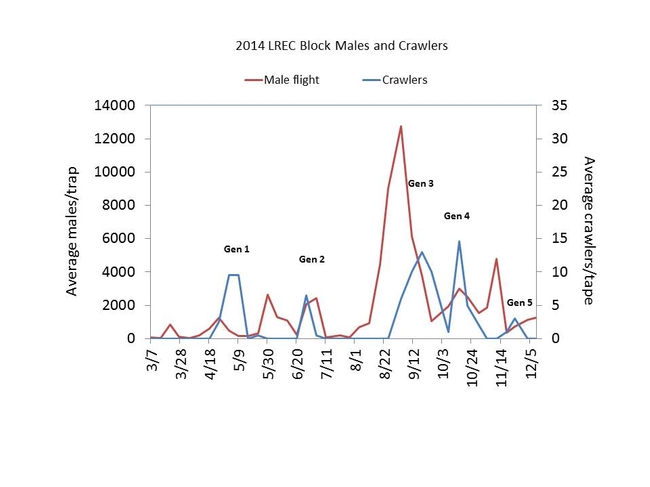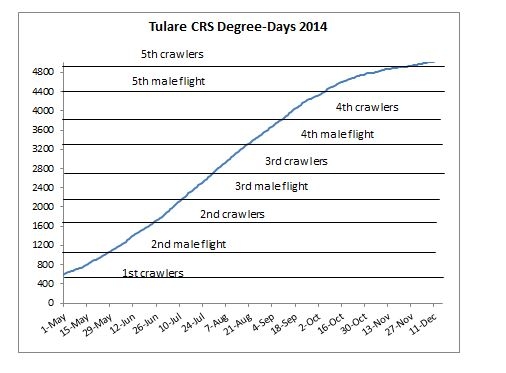This year was a 'perfect storm' for California red scale; combine the drought with higher than normal average daily temperatures and pesticides that disrupt scales and you have a crisis.
Drought: Some insect populations increase when trees become water stressed and California red scale is one of those. It could be a direct response to the tree or it could be because increased dust reduces the effectiveness of natural enemies.
Higher than normal temperatures: Typically, San Joaquin Valley conditions produce 4 to 4.5 generations of California red scale per year. Usually, by November 1, the female scales stop producing crawlers and shut down for the winter. This year, the degree days (heat units) were higher than normal the entire red scale season (from March 1 - Dec 1). This produced a full 5th generation of scale and scale crawlers were still emerging in December. Many growers struggled to control California red scale because the problem appeared late in the season and this pest is very difficult to control with insecticides once it reaches the fruit. Degree day units were high not only this year, but have been higher than the 30 year average for the past 3 years, accumulating extra scales each year.
Insecticides: Research has demonstrated that systemic neonicotinoids such as imidacloprid can reduce scale on fruit and leaves but are not effective in controlling California red scale on woody tissues such as bark and twigs. These insecticides are also toxic to natural enemies. Using these products year in and year out builds scale on the wood, that eventually makes its way to fruit.
Below are the flights and five generations of crawler activity at Lindcove Research and Extension Center. Also shown are the degree day units accumulated at Lindcove through the season. See degree day units for California red scale for other locations.

